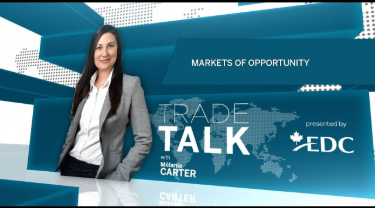How to use key indicators to research high-potential markets
Companies know they need to balance risk and reward in business when determining whether to sell into a new market. So how does a smaller company go about weighing the levels of opportunity and risk in their target market?
Below, we outline an approach, developed by our country risk analysts, that you can use to make strategic decisions about what emerging markets to prioritize for your market entry or expansion plans.
The first step is to research and answer 4 key questions:
- How risky is the market?
- How easy is it for international companies to do business there?
- How good is the country’s logistical infrastructure?
- What is the forecast for imports in the coming years?
Markets of Opportunity tool
Our experts have created a Markets of Opportunity tool.
The tool ranks the performance of more than 100 emerging markets in 4 main categories using 14 key indicators or data points. When looked at together, these indicators and their respective rankings can help determine if the mix of risks and rewards is right for you.
Here’s how to make it work for you:
Evaluate the country risk
The first step is to look for resources that can help you evaluate that risk. For example, we put out the Country Risk Quarterly, where we analyze the risks in over 100 markets.
We look at factors that include:
- Political violence, such as terrorist attacks or rebellions occurring and affecting the commercial environment, for example, by damaging the assets of a company.
- The local government taking adverse actions, such as expropriations or interference against businesses.
- The risk of the local government imposing restrictions on the transfer of foreign currency out of the country or taking measures to restrict the purchase of hard currency by local businesses.
- The risk of economic conditions deteriorating in a way that increases the risk local companies won’t be able to pay.
The pros of looking at these key business indicators is that they are forward-looking and can highlight potential challenges even if the market appears stable.
The cons are that risk can sometimes be sector specific or highly variable depending on where and how you do business in a country. For example, even in some countries that have high levels of political violence, there may be local companies that are resilient, able to maintain operations and pay for the equipment they need.
In many emerging markets, there are also pockets in a country that are conflict zones, while other parts are politically stable and prosperous.
Or a market may have a low-risk rating overall but a specific industry within the country may face higher risks of government interference.
You should also check out
Which emerging markets are the best fit for your business? Take the quiz to see which countries our economists recommend to meet your needs.
Determine how easy it is to do business there
Here you look at whether the local regulatory environment is favorable to starting and running a local business.
Look at the World Bank’s Ease of Doing Business Index which relies on detailed data ranging from the time it takes to get a construction permit, to the ease with which contracts can be enforced in the local courts.
It can provide a good sense of the challenges, or the lack thereof, facing local businesses and international companies.
The cons are that the index may not be relevant if you are shipping goods to a foreign country. You are unlikely to have to deal with these challenges.
Figure out the ease of getting into, or setup in, that market
The World Bank’s Logistics Performance Index and the World Economic Forum’s Global Competitiveness Index can help you assess things like the quality of the local port infrastructure, the time it takes to clear customs and the quality of the local logistics infrastructure, according to freight forwarders.
The advantage of this indicator is that it can help companies predict the difficulty or ease with which they will able to get their goods into a market.
One potential downside is that it doesn’t apply to knowledge service providers or other companies that are not heavily reliant on their supply chains.
Factor in the import forecast outlook
Look for a forecast evaluating the possible growth or decline of imports into your target market. The advantage is that this helps you look forward, highlighting high-potential countries. Resources include EDC’s Export Global Forecast or the OECD’s Trade in Goods and Services Forecast.
The disadvantage is that looking at this factor ranks countries based on the change (either the percentage increase or percentage decrease) of their imports. It does not consider the size of an economy.
Among emerging markets, there are some larger and more mature economies that may experience slower growth than smaller, less developed economies, but could still present lots of opportunity.
The final word: Once you have identified your next market of opportunity based on the rankings or other considerations, the next step is to develop a risk management plan.
One useful tool is our Managing Risk eBook, which will help you assess and develop a program and policies to protect your company.






